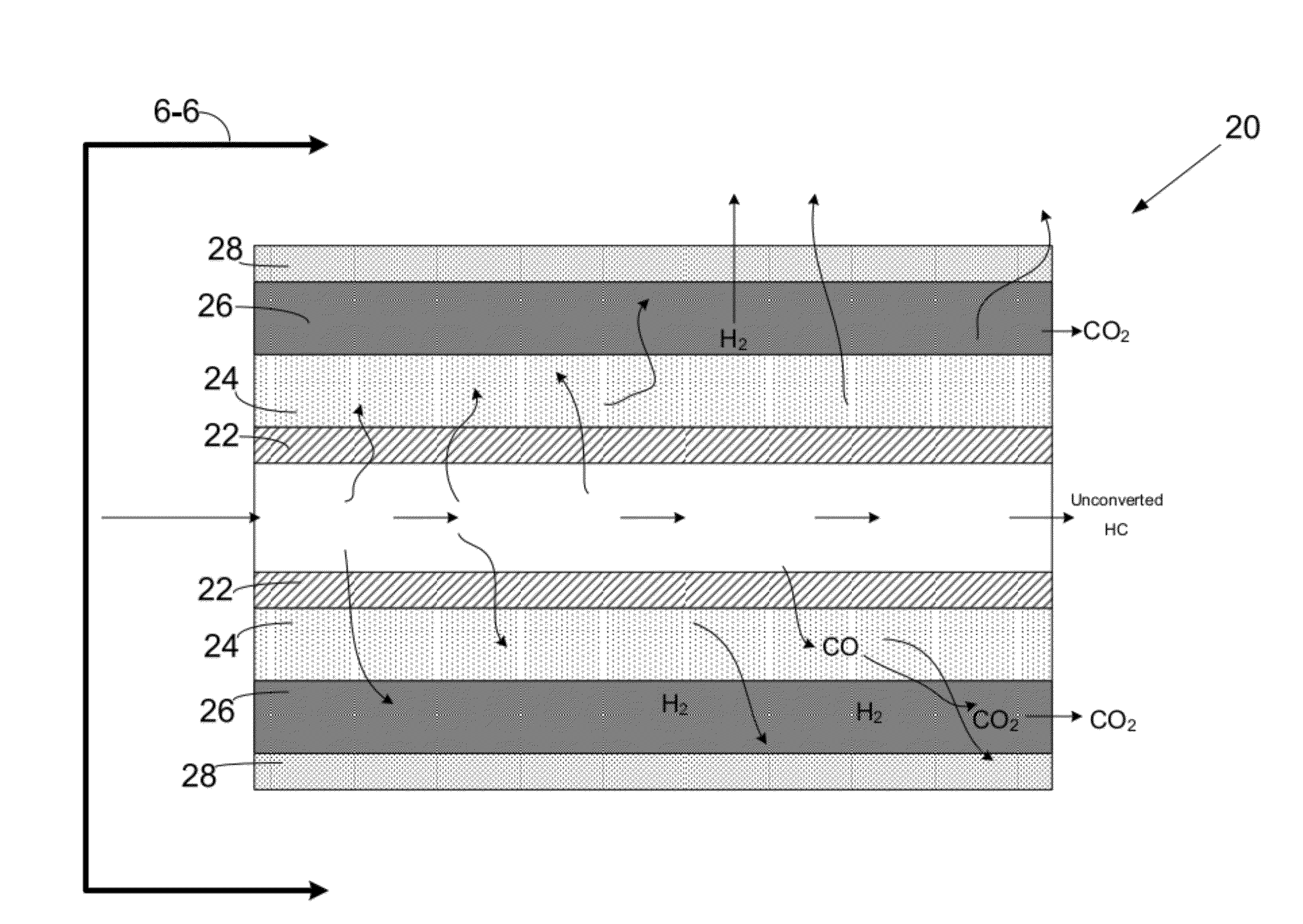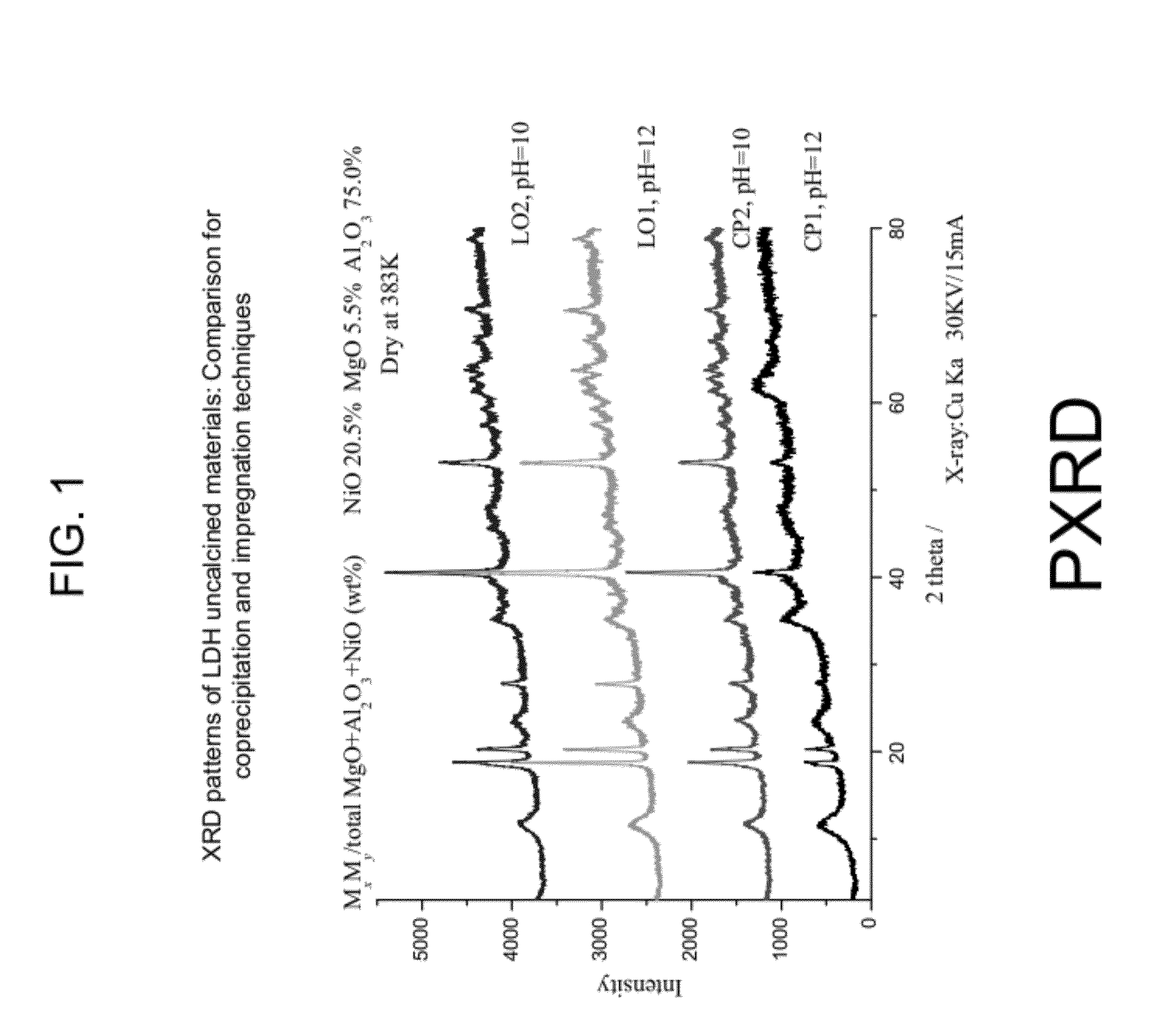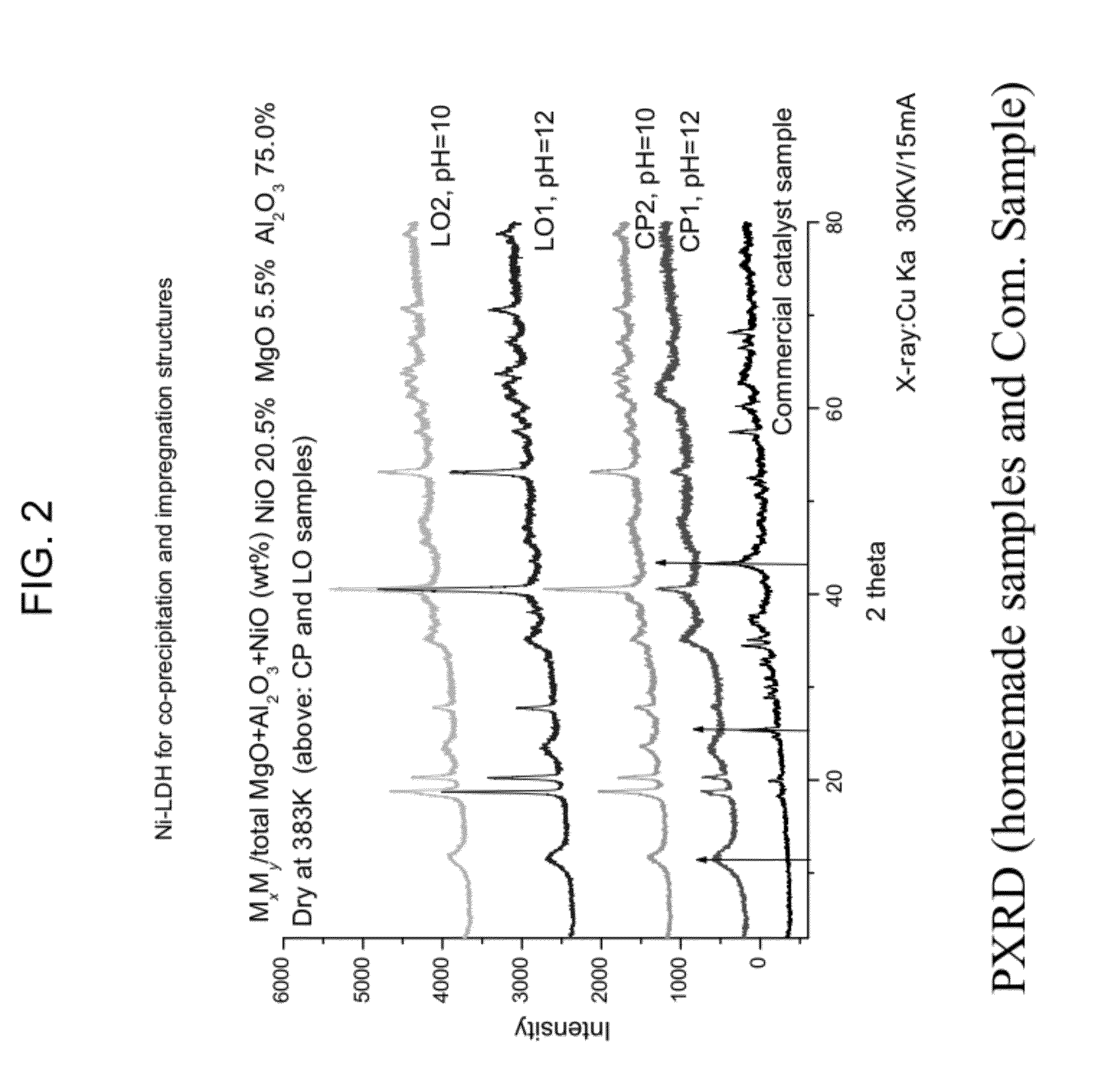Metal supported silica based catalytic membrane reactor assembly
a technology of catalytic membrane and reactor assembly, which is applied in the direction of catalyst activation/preparation, metal/metal-oxide/metal-hydroxide catalyst, etc., can solve the problems of inability to meet the requirements of large-scale operations. , to achieve the effect of increasing the production of hydrogen
- Summary
- Abstract
- Description
- Claims
- Application Information
AI Technical Summary
Benefits of technology
Problems solved by technology
Method used
Image
Examples
Embodiment Construction
[0044]While the invention will be described in connection with several embodiments, it will be understood that it is not intended to limit the invention to those embodiments. On the contrary, it is intended to cover all the alternatives, modifications and equivalence as may be included within the spirit and scope of the invention defined by the appended claims.
[0045]Nano sized catalysts provide advantages over their full size counterparts, particularly in autothermal (ATR) reactions and water-gas-shift (WGS) reactions, in that they increase reaction activity, improve selectivity, improve reactivity towards hydrogen production, and minimize the undesirable methanation reaction.
[0046]Carbon formation (as coke), which is a primary disadvantage of a reforming process, is a kinetic issue. As such, coke production depends on the relative reaction rates of possible carbon species reaction alternatives. The reaction mechanism is largely dependent on the hydrocarbon type, operating condition...
PUM
| Property | Measurement | Unit |
|---|---|---|
| porosity | aaaaa | aaaaa |
| pore size | aaaaa | aaaaa |
| pore size | aaaaa | aaaaa |
Abstract
Description
Claims
Application Information
 Login to View More
Login to View More - R&D
- Intellectual Property
- Life Sciences
- Materials
- Tech Scout
- Unparalleled Data Quality
- Higher Quality Content
- 60% Fewer Hallucinations
Browse by: Latest US Patents, China's latest patents, Technical Efficacy Thesaurus, Application Domain, Technology Topic, Popular Technical Reports.
© 2025 PatSnap. All rights reserved.Legal|Privacy policy|Modern Slavery Act Transparency Statement|Sitemap|About US| Contact US: help@patsnap.com



